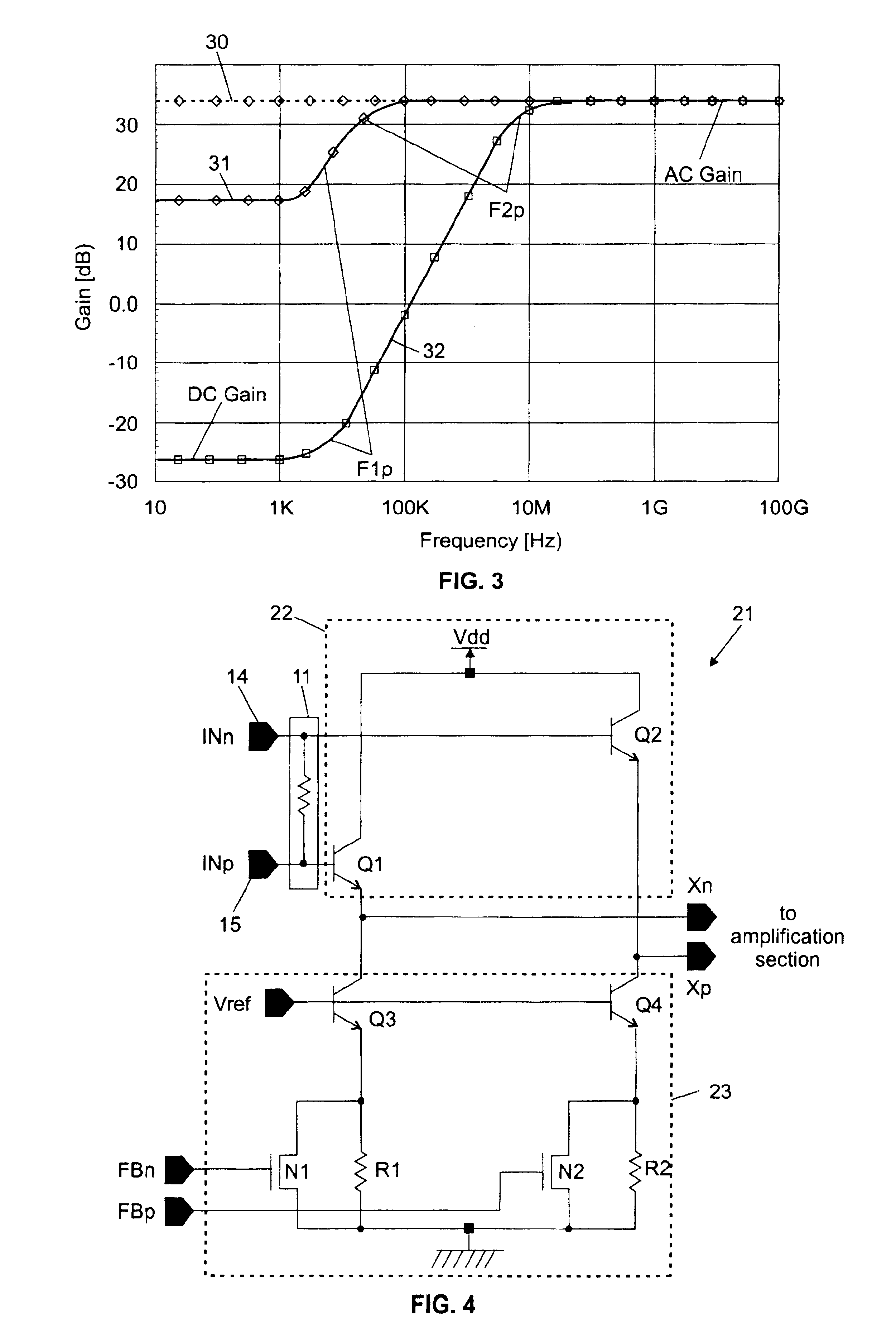Differential amplifier with DC offset cancellation
a technology of offset cancellation and differential amplifier, which is applied in the direction of dc-amplifiers with dc-coupled stages, differential amplifiers, and amplifiers with semiconductor devices/discharge tubes, etc. it can solve the problems of reducing the dc offset and detrimentally saturating the differential output signal vout with invalid information, and achieves low eye-diagram closure, excellent input impedance matching, and good jitter (and bit error rate performance
- Summary
- Abstract
- Description
- Claims
- Application Information
AI Technical Summary
Benefits of technology
Problems solved by technology
Method used
Image
Examples
Embodiment Construction
[0014]Like reference numerals (with prime) are used through the several drawings to designate identical (corresponding) parts.
[0015]The improved large bandwidth high frequency amplifier of the present invention is shown in FIG. 2 where its bears numeral 20. In essence, it differs from the conventional FIG. 1 amplifier 10 by the input and feedback signal combining block that bridges both the direct amplification line and the feedback loop, while the other elements remain substantially identical. Now turning to FIG. 2, the signal and feedback signal combining block referenced 21 is comprised of a circuit 22, typically a buffer or an unitary gain amplifier (as shown in the drawing), placed between the input matching circuit 11 and the amplification section 12 on the one hand, and of a differential amplifier 23 connected in series with the feedback block now referenced 13′ because the RC network 17 shown in FIG. 1, can be simplified in some extent (the resistors composing sub-network 17...
PUM
 Login to View More
Login to View More Abstract
Description
Claims
Application Information
 Login to View More
Login to View More - R&D
- Intellectual Property
- Life Sciences
- Materials
- Tech Scout
- Unparalleled Data Quality
- Higher Quality Content
- 60% Fewer Hallucinations
Browse by: Latest US Patents, China's latest patents, Technical Efficacy Thesaurus, Application Domain, Technology Topic, Popular Technical Reports.
© 2025 PatSnap. All rights reserved.Legal|Privacy policy|Modern Slavery Act Transparency Statement|Sitemap|About US| Contact US: help@patsnap.com



